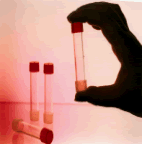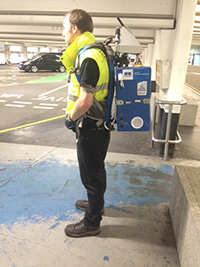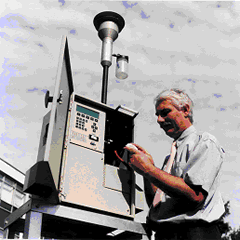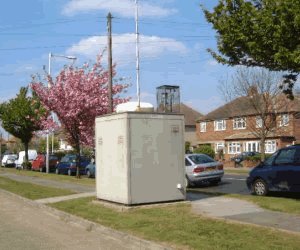| Method | Advantages | Disadvantages |
|---|---|---|
| Passive Sampling | Low cost/simple. Useful for screening and base-line studies and in support of automatic monitoring for Detailed Assessments. | Unproven for some pollutants. Laboratory analysis required. In general, only provide weekly or longer averages. |
| Low Cost Sensor Systems | Can be used portably. Moderate cost, high time resolution. | Low sensitivity may only provide indicative measurements. Not accredited or approved. |
| Active (Semi-Automatic) Sampling | Low cost/easy to operate - reliable. Historical datasets available from UK networks. | Provide daily averages. Some methods are labour intensive. Laboratory analysis required. |
| Automatic Point Monitoring | Provide high resolution data. On-line data collection possible. Provide path or range-resolved data. | Relatively expensive. Trained operator required. Regular service and maintenance costs. |
| Remote Optical/Long-Path Monitoring | Useful near sources. Multi-component measurements possible. | Relatively expensive. Trained operator required. Data no readily comparable with point measurements. |
Passive Sampling
Methods (Diffusion Tubes) -These represent a simple and cost-effective method of monitoring air quality in an area, to give a good general indication of average pollution concentrations. They are, therefore, particularly useful for assessment against annual mean objectives. A sample integrated over the exposure time is collected by diffusion to the sampler. The low cost per tube permits sampling at a number of points in the area of interest; this is useful in highlighting hot spots of high concentrations, such as alongside major roads. They are less useful for identifying 'hot spots' around point sources or near to industrial locations where greater temporal resolution is required for particular objectives. Diffusion tubes surveys are simple to undertake and minimal operator training is required. Diffusion tubes are available for the following pollutants in the Air Quality Strategy:
 |
|
 |
The tubes must be analysed by laboratories that can offer suitable quality assurance and quality control measures to ensure the results meet the data quality objectives defined for the method (contact the Monitoring Helpdesk for a list of suppliers and analysers of diffusion tubes). The diffusion tube data may be corrected for bias in the analytical results.
Low Cost Sensor Systems
Low cost sensor systems are typically small, low power devices, ranging in price from a few hundred pounds for a single pollutant, to several thousand pounds for a complete multi pollutant system. They are typically battery powered and can be used at fixed locations (e.g. attached to a lamppost) or handheld for mobile pollution studies.
They can provide very highly time resolved data – 1 minute average or less – and because of the lower costs can be deployed in larger numbers than conventional automatic analysers.
Depending on the system used, they will require ongoing maintenance and regular characterisation to ensure reasonable data quality. None of the systems have undergone any formal type testing process and the quality of the data obtained is not yet demonstrated to meet equivalence or indicative status, unlike the other monitoring systems described here. But with suitable quality control procedures, the sensors can be successfully used to identify and map pollution hotspots and diurnal pollution variations very cost effectively.

Active (Semi-Automatic) Sampling
Sampler Methods These methods collect pollutant samples either by physical or chemical means for subsequent analysis in a laboratory. Typically, a known volume of air is pumped through a collector such as a filter or chemical solution for a known period of time, for subsequent laboratory analysis. These include bubbler samplers for sulphur dioxide and nitrogen dioxide and gravimetric filter samplers for PM10 and lead. Sequential instruments with automatic sample changers are available.


Automatic Point Monitoring
These are the most sophisticated (and usually the most expensive) air quality monitoring systems. Automatic analysers draw in ambient (outdoor) air, and measure the concentration of the pollutant in the sampled air. Automatic monitoring techniques are used in Wales for oxides of nitrogen, sulphur dioxide, carbon monoxide, ozone and particulate matter (PM 10 and PM2.5). Gas chromatography (GC) analysers also provide high-resolution data on benzene, and 1,3-butadiene. The sample is analysed on-line and in real-time. Automatic air quality monitoring systems produce high-resolution measurements (typically hourly or shorter period averages), which can be communicated to the public in near-real time, using telemetry. In order to ensure that the data produced are accurate and reliable, a high standard of operation is required, including regular maintenance, calibration, and detailed quality assurance/quality control procedures.
The automatic monitoring sites in Wales are shown on the map on the home page of this website; to see current pollutant levels and details of the site, click on the site’s marker.


Remote Optical/Long Path analysers
These are instruments that use a long-path spectroscopic technique to make real-time measurements of the concentration of a range of pollutants integrated along a path between a light source and a detector. Instruments using the Differential Optical Absorption Spectroscopy (DOAS) system can be used to monitor data for nitrogen dioxide, sulphur dioxide and benzene. In order to ensure that the data produced are accurate and reliable, a high standard of maintenance, calibration, operational and quality assurance and quality control procedures is required.


